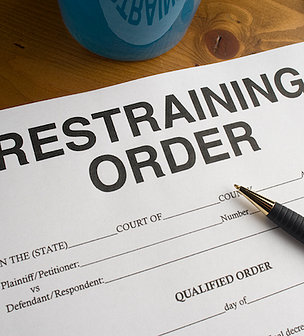Many clients ask us to bring proceedings for restraining orders without having a solid understanding of what applying for one entails, from a family law perspective. A restraining order is typically sought and provided by a Court in situations when a current partner, or a separated partner is taking part in stalking, domestic violence or abuse. The legislature in Ontario provides that the Court may make a restraining order if the person has reasonable grounds to fear for their own or their child’s safety and well-being.
It is not necessary for a respondent to actually commit an act in order to justify a restraining order. If the person has a legitimate fear of such acts being committed, it constitutes a reasonable ground for the restraining order. Further to this, the violence does not necessary need to be physical. It can be verbal, emotional or psychological abuse as well.
A restraining order is quite an effective way to protect one’s self from people who make you fear for your safety. Breaching a restraining order is a criminal offence and, if the person restrained is found guilty, he or she could go to jail.
The restraining order can specify the date when it terminates or it might not have the termination date. It may also contain certain limitations or exceptions, listing, when communication between parties can occur and in what circumstances, for example, in the presence of a family law lawyer or communication utilizing third parties for the exchange of access or visitation of children and to make child custody decisions related to the welfare of children.
Restraining orders are not easily granted, and one must satisfy a family Court with evidence as to why one might fear for their safety or the safety of their children. Although in certain serious situations, the Court will allow you to bring an emergency court proceeding to obtain a restraining order, if you are in any immediate danger, you should contact the police.



